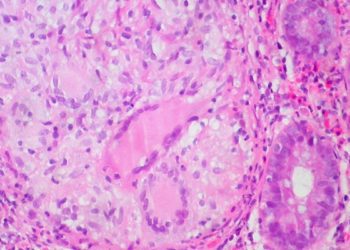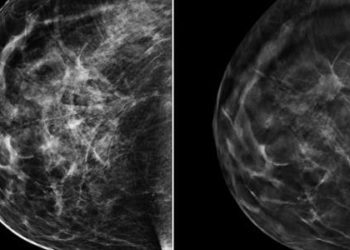Right ventricular structure associated with an increased risk of heart failure and cardiovascular death; (MESA) Right ventricle study
Image: PD
Key study points:
1. The presence of right ventricular (RV) hypertrophy, as measured by cardiac MRI, in individuals without cardiovascular disease at baseline, was correlated with an increased risk of heart failure or death due to cardiovascular causes.
2. This association held even after taking into account left ventricular (LV) hypertrophy.
Primer: It is a truth universally acknowledged that a conversation about cardiovascular risk must include a nod to the left ventricle (LV), whose distress might manifest as chest pain in a patient with LV ischemia, or as increased ECG voltage in a patient with hypertension. In comparison, the contributions of RV structure and function to cardiovascular disease are not yet well understood. RV morphology was, in fact, dismissed as unimportant in historical animal studies of cardiac function. However, recent studies of patients with pulmonary hypertension and congestive heart failure have marked RV size and ejection fraction as independent predictors of survival. Yet, the elucidation of the role of the RV in the community-based patient has proved elusive.
Background reading:
1. Haddad F, Hunt SA, Rosenthal DN, Murphy DJ. Right ventricular function in cardiovascular disease, parts I and II: anatomy, physiology, aging, and functional assessment of the right ventricle. Circulation. 2008;117:1436–1448, 1717-1731
2. Bild DE, Bluemke DA, Burke GL, Detrano R, Diez Roux AV, Folsom AR, Greenland P, Jacob DR Jr, Kronmal R, Liu K, Nelson JC, O’Leary D, Saad MF, Shea S, Szklo M, Tracy RP. Multi-Ethnic Study of Atherosclerosis: objectives and design. Am J Epidemiol. 2002;156:871– 881.
This [prospective cohort] study: In this week’s Circulation, Kawut et al report an analysis of cardiac MRIs and subsequent outcomes in >4000 participants of the Multi-Ethnic Study of Atherosclerosis (MESA): a large prospective study designed to assess risk factors and progression of cardiovascular disease in a sample of healthy patients. The individuals studied were, on average, mildly overweight, normotensive adults in their early 60’s per baseline data. Median follow-up time was 5.8 years.
After controlling for demographics, hypertension, smoking status, BMI, and CRP levels, the investigators found that the presence of RV hypertrophy doubled the risk of heart failure and cardiovascular death (hazard ratio, 2.52; p<0.001). This association held even after accounting for the interaction between RV hypertrophy and LV mass but was stronger for those patients with lower LV mass. 65% of the study sample had pulmonary function testing approximately two years after baseline. RV hypertrophy remained significantly associated with heart failure and cardiovascular death even after additionally adjusting for pulmonary disease.
In sum: The presence of RV hypertrophy, as measured by cardiac MRI in patients who were clinically disease-free at baseline, was significantly associated with an increased risk of heart failure or cardiovascular death, even after accounting for LV mass.
Although it is possible that RV hypertrophy may directly contribute to heart failure, the correlation seen in this study does not prove causality. One very plausible explanation is that RV hypertrophy might be speaking for unmeasured variables that increase both RV afterload and the risk of cardiovascular events; examples include sleep breathing disorders and subclinical pulmonary disease. Another possibility is that RV hypertrophy might herald an increased risk of heart failure by serving as a very sensitive gauge for LV dysfunction.
Overall, these provocative results, linking RV structure to cardiovascular disease in community-based patients, serve as a call for further study of possible mechanisms and therapies.
Click to read the study in Circulation
Click to read an accompanying editorial in Circulation
By MP and MS
© 2012 2minutemedicine.com. All rights reserved. No works may be reproduced without written consent from 2minutemedicine.com. DISCALIMER: Posts are not medical advice and are not intended as such. Please see a healthcare professional if you seek medical advice.




